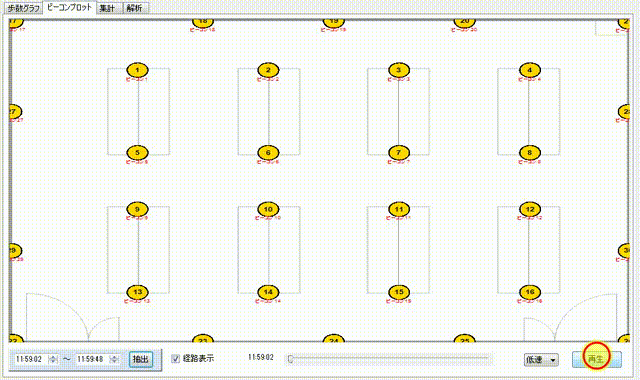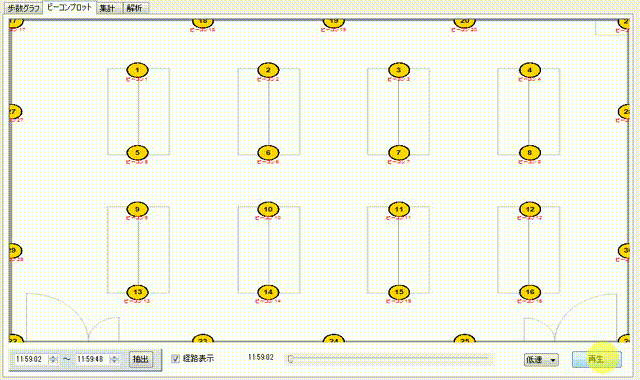Core Technology
Accurate estimation of activities such as standing, walking, running, bending over, and others is achieved through the use of accelerometers, gyroscopes, barometric pressure sensors, and machine learning.
The state estimation is primarily based on accelerometer data, while altitude is obtained from barometric pressure sensors. Machine learning enables the estimation of various states.

Indoor Positioning
BLE (Bluetooth Low Energy) radio signal strength + PDR (Pedestrian Dead Reckoning) achieves 1m positioning accuracy and seamless positioning using beacons and GPS.
In general, trilateration (the method of surveying) can result in an error rate due to the influence of the human body, but PDR based on step count information enables a 1 m positioning accuracy.

Trilateral positioning (significant error due to the effect of the human body)

Trilateral positioning + PDR

When using smart devices, indoor and outdoor positioning seamlessly switches between beacons indoors and GPS outdoors, allowing real-time display.
GPS can be customized to match the layout of any area and differentiate between stop, in-motion, and vehicle-boarding activities by using color coding.
The size of the stationary circle increases gradually with the duration of inactivity, ensuring safety and security.
